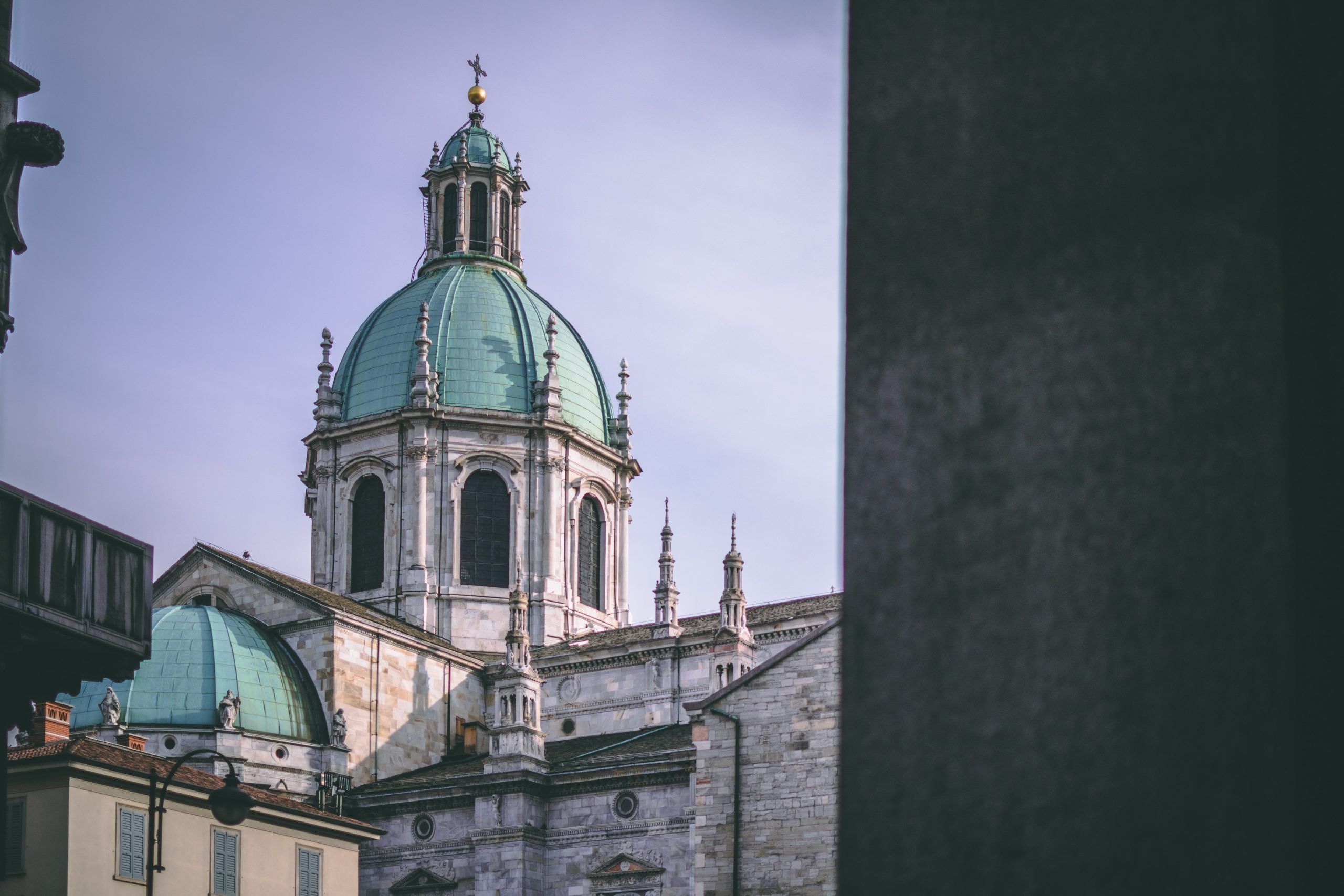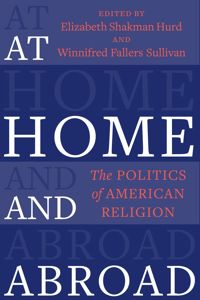
At Home and Among “Heathens”
Matthew J. Cressler
Photo by Robert Tudor on Unsplash.
This article is part of our “At Home and Abroad” series.
If you’d like to check out other articles in this series, click here.
Elizabeth Shakman Hurd and Winnifred Fallers Sullivan open their edited volume At Home and Abroad: The Politics of American Religion (Columbia University Press, 2020) with an epigraph:
Is it, perhaps, possible that there are two kinds of Civilization—one for home consumption and one for the heathen market? – Mark Twain, “To the Person Sitting in Darkness”
This quote haunted the whole book, for me. Though the authors do not unpack the epigraph directly, the next two sentences seem to serve as Hurd and Sullivan’s gloss. They write, “[r]eligion has always been central to American self-understanding. But there is today and there always has been a difference in the United States between the domestic versions of religion and religious freedom and of those offered for export” (1). Twain is not referenced again until the final chapter. Nevertheless, his satirical suggestion exemplifies key interventions of the book, in more ways than are obvious at first glance.

The contributions collected in this volume connect the foreign with the domestic, two spheres typically thought of as distant and distinct by scholars and popular audiences alike. By bridging these different versions of “religion and religious freedom,” contributors illuminate the obscured and unstable boundaries between religion and not religion, between “good” religion and “bad” religion, as well as the boundaries of the U.S. American national and imperial project itself. More than merely “revealing the inevitable hypocrisy of power politics,” the book’s interrogation of divergent religion policies enforced by U.S. actors highlights how a particular conception of “religion,” rooted in protestant Christianity, has enabled a particular set of “political and religious possibilities” (6-7). This is what I take Hurd and Sullivan to mean when they state that by “[b]ringing domestic and foreign aspects of the politics of American religion into a single field of vision, the essays seek an understanding of the religious and political phenomenology of the disestablishment of religion that underlies U.S. history” (2).
Throughout much of the book, these two fields of vision — at home and abroad — cohere and are conceptualized in the way we might expect: as geographic designations. Some authors explicitly engage in transnational comparative work. For instance, Evan Haefeli reframes the early U.S. republic as “the ‘abroad’ of another home” (20), tracing disestablishment and the birth of American religion to a distinctively British inheritance of anti-popery. Likewise, Nancy Buenger examines the establishment of the judicial system known as equity (juryless criminal proceedings) in Progressive Era Chicago and the Philippines in order to show how, in both contexts, “American state expansion” was fueled by Christian imperial traditions (56). Other authors do not move back and forth between home and abroad so much as they explore the operation of one version of “religion and religious freedom” in an other context. To take one example, Sarah Imhoff introduces us to Jessie Sampter, a thirty-six-year-old American Zionist Jew, and tells the story of an American conception of religion abroad. Sampter carries with her a sense of what “real” religion ought to be as she makes a new home in Palestine. In either iteration, “at home” and “abroad” operate on one level as the spatial signifiers we are accustomed to, even if contributors are attentive to the discursive weight of these terms too.
The distinction between the “home” and the “heathen,” as Twain frames it, has little to do with geography and everything to do with power.
But what strikes me the most — indeed, what haunts me — about that Twain quote is how the distinction he makes between “two kinds of Civilization” is not spatial so much as it is religious, racial, and imperial. The distinction between the “home” and the “heathen,” as Twain frames it, has little to do with geography and everything to do with power. If bridging the physical distance between various U.S. American homes and abroads is its chief conceit, the book is at its most incisive when it uses its unique field of vision to clarify the ways “religion and religious freedom” have been wielded to create, legitimate, and maintain power. Hurd and Sullivan hint at this early on when they note that “U.S. foreign policy has most often pursued a policy of explicit ‘conversion’ both abroad and in its internal colonization of indigenous and enslaved populations, while domestic policy with respect to white Americans has characterized itself as noninterference” (3). It is telling that the co-editors’ first example of U.S. foreign (religion) policy pertains to the treatment of colonized and racialized populations at home in North America. This recalls Sylvester Johnson’s insistence that colonialism “is formed not through a spatial differential but rather through a power differential. It is constituted by politics, not physical distance.” “Colonialism,” he further notes, “is the essential matrix of racialization.” To study the politics of U.S. American religion at home and abroad, then, is to study how categorical distinctions — between “good” and “bad” religion, to take one example — serve to racialize and rationalize the colonial subjugation of populations.
Though largely implicit throughout the book, this racialized distinction between home and “heathen” rises to the surface at particular moments. Buenger’s study shows how equity courts emerged from the medieval Christian governance of miserabile personae (widows, orphans, and other so-called dependents) and eventually was applied to a range of gendered and racialized “dependents,” both in Chicago’s municipal courts and in the colonial courts of the Philippines. Greg Johnson details how Native Hawaiian activists — caretakers of iwi (bones) and ‘āina (land) — have challenged the jurisdictions of settler governments in their struggles to repatriate Native Haiwaiian iwi and through the literal occupation of ‘āina. Caretakers contest the very legitimacy of settler states to designate what is “home” or “abroad” in the first place. As he puts it, “Their religious freedom on the mauna — indeed, even the freedom to be there — is not something for the state or the federal government to decide. In their eyes, they are ‘at home’ even while their so-called home lands are a fiction of a foreign regime” (159). Jolyon Baraka Thomas similarly breaks down the “dichotomous framing of ‘home’ and ‘abroad’” in his chapter on postwar and contemporary Japan (201). Despite attempts by Prime Minister Abe Shinzō’s administration to re-enshrine the State Shintō of wartime Japan, the United States refuses to cite them for religious freedom violations. This is because, as Thomas concludes, “Japan is closer to ‘home’ than ‘abroad.’ Our missiles are based there. Our ideals were implanted there. To admit that Japan has problems with religious freedom would be to admit that religious freedom has problems” (206).
Noah Salomon carries this argument to its furthest extent. One of the real strengths of this book is its capacity for self-critique, and so it is that we find its final chapter interrogating the very concepts that serve as its foundation. Salomon questions “whether [home and abroad] have the stability and tenacity we often give them.” “[S]hould we, as scholars, accept their coherence?” “On closer examination,” he continues, they “appear less as distinct places than as discursive constructions that make certain kinds of political practice possible” (289). And, as Salomon goes on to illustrate, the two are inextricable from one another. U.S. encounters with Islam abroad rationalize the surveillance of Muslims at home, while religious freedom at home provides plausible deniability for state actions abroad. Or, in another register, we might think of the ways settler colonial violence against Indigenous populations at home get deployed in imperial actions abroad only to reverberate back home again in the militarization of law enforcement and the extrajudicial execution of Black women, men, and children. These considerations prompt Salomon to pose a provocative question: “might what America promotes abroad not be the ‘other’ to its own peculiarities of race and religion but in fact its realization?” (292). What if Twain’s “two kinds of Civilization” are, in fact, one and the same. Perhaps there was only ever one “Civilization,” one fully realized in conversion and conquest.
To study the politics of U.S. American religion at home and abroad is to study how categorical distinctions serve to racialize and rationalize the colonial subjugation of populations.
It’s worth pausing here to note that U.S. Americans and the U.S. state are unexceptional in this regard, as is protestant Christianity. This is precisely the logic by which the Catholic church categorizes its missionary endeavors around the world: “home” and “foreign” missions. Here, once more, the designation does not depend on geography. Home missions are organized to reinvigorate the faith of lapsed Catholics. Foreign missions are for converting “heathen” populations, at home and abroad. As a number of scholars have noted, the history of the word “heathen” is inextricably bound to European colonialism and the racialization of enslaved Africans in particular. To borrow an example from my own research, this is what made it possible for Chicago, a twentieth-century Catholic metropolis, to become home to foreign missions. This is what brought Father Joseph Eckert, a German priest in the religious order known as the Society of the Divine Word, to Chicago in 1921. Primed from childhood for a life of adventure on the missionary frontier, Eckert yearned to be “sent to our Negro Mission in Togo, West Africa… [But] instead of landing among the Negroes in Africa, [he found himself] among Negroes on the south side of Chicago.” Note here how, for Eckert, geography is almost immaterial — as though to be a Togolese African was somehow equivalent to being an African American migrant from the Mississippi Delta. What mattered, as far as Eckert was concerned, was that both were “heathens” and, as he wrote of his time there on the south side, that this was “real, soul-saving and pioneer missionary work.” This example (and surely the examples are innumerable) invites us to wonder whether the double standards of religion and religious freedom that the book describes are less a U.S. American (protestant Christian) phenomenon and more a European-American (colonial Christian) one.
This reading is certainly in keeping with the spirit of “To the Person Sitting in Darkness,” the essay from which the opening epigraph is drawn. After all, Mark Twain satirized and criticized U.S. American ambitions to imperialism precisely by comparing them with their colonial counterpart: that of European Christendom. This reading also aligns with what I take to be the underlying intervention of the project as a whole: to interrogate the American exceptionalist assumptions that constitute the home/abroad distinction with regard to religion. (The “Politics of Religion at Home and Abroad” project also includes a second volume co-edited by Hurd and Sullivan, Theologies of American Exceptionalism [Indiana University Press, 2021].) And so, to take up Noah Salomon’s provocation one last time, if the policies the United States promotes abroad are simply the U.S. religio-political project driven to its furthest extreme, how might we categorize that project? Or, to put it bluntly, if the “Civilization” on offer “for home consumption and heathen market” is ultimately one and the same, then what constitutes this so-called “Civilization”?
This is what I was left wondering when I finished this brilliant book, which led me to think of another anti-imperialist intellectual, one far more adept than Twain at analyzing the inseparability of religion, race, and U.S. empire. In his 1920 essay “The Souls of White Folk,” W.E.B. Du Bois defined whiteness as “ownership of the earth forever and ever, Amen!” and situated it as an inheritance of European Christian colonialism. What does this white Christian Civilization look like from the vantage point of “the Darker peoples” of the world, as he put it? Like “orgy, cruelty, barbarism, and murder,” all accomplished “in the name of Civilization, Justice, and Motherhood.” It looked like more than two centuries of “making bonfires of human flesh and laughing at them hideously, and making the insulting of millions more than a matter of dislike,—rather a great religion, a world war-cry: Up white, down black; to your tents, O white folk, and world war with black and parti-colored mongrel beasts!” Of the many urgent interventions this book makes in our understanding of religion and religious freedom, the one that most stood out to me was how, again and again, contributors revealed the ways the adjudication of those two terms — at home and abroad — have been essential to the making and sustaining the power of U.S. empire and white supremacy. ♦

Matthew J. Cressler is associate professor of religious studies at the College of Charleston. He is the author of Authentically Black and Truly Catholic: The Rise of Black Catholicism in the Great Migration (NYU Press, 2017) and “‘Real Good and Sincere Catholics’: White Catholicism and Massive Resistance to Desegregation in Chicago, 1965-1968” in Religion and American Culture 30:2, 2020.
Recommended Citation
Cressler, Matthew J. “At Home and Among ‘Heathens.'” Canopy Forum, June 7, 2021. https://canopyforum.org/2021/06/07/at-home-and-among-heathens/.

